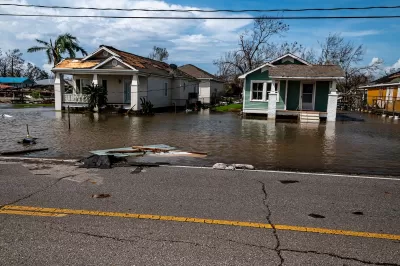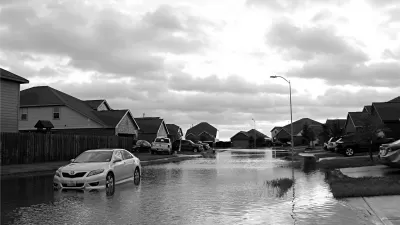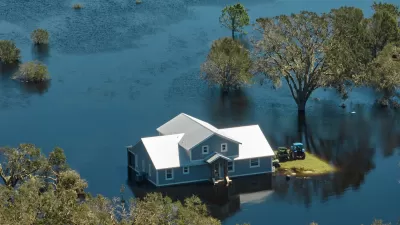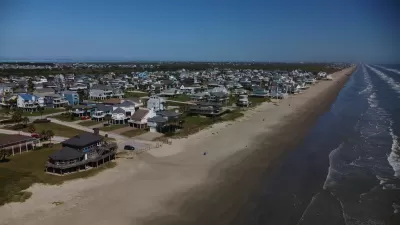Many U.S. cities use ‘routine’ practices like zoning changes and permitting to discourage development in high-risk flood zones.

New research published in the journal Earth’s Future shows that the United States is building fewer structures in floodplains, bucking conventional wisdom that development is running rampant in flood-prone areas, writes Jake Bittle in Grist. A separate paper found that some of the most effective approaches to limiting floodplain development are “routine municipal practices” such as zoning and permitting.
The results reveal that floodplain development is not the intractable problem some have made it out to be. “Developers have built 844,000 units of housing on 2.1 million acres of floodplain — but if they had chosen available parcels at random, they would have built even more than that. This was true for more than 75 percent of all jurisdictions studied, indicating that most governments make at least some substantive attempt to avoid coastlines and riverbanks.”
According to the study, “Indeed, in the 21st century most towns and cities in the U.S. built very little or not at all in flood-prone areas. The vast majority of floodplain construction — the kind that grabs headlines and feeds the pessimistic narrative — has taken place in just two states: Louisiana and Florida.”
Around half of properties that have filed multiple flood insurance claims are in Gulf of Mexico states. “The authors argue that these places need targeted intervention. The state or federal government could provide subsidies to encourage less risky construction, helping offset the economic lure of waterfront construction, or a state could just impose penalties on cities that allow for new builds near the water.”
FULL STORY: The US is finally curbing floodplain development, new research shows

Planetizen Federal Action Tracker
A weekly monitor of how Trump’s orders and actions are impacting planners and planning in America.

Congressman Proposes Bill to Rename DC Metro “Trump Train”
The Make Autorail Great Again Act would withhold federal funding to the system until the Washington Metropolitan Area Transit Authority (WMATA), rebrands as the Washington Metropolitan Authority for Greater Access (WMAGA).

The Simple Legislative Tool Transforming Vacant Downtowns
In California, Michigan and Georgia, an easy win is bringing dollars — and delight — back to city centers.

The States Losing Rural Delivery Rooms at an Alarming Pace
In some states, as few as 9% of rural hospitals still deliver babies. As a result, rising pre-term births, no adequate pre-term care and "harrowing" close calls are a growing reality.

The Small South Asian Republic Going all in on EVs
Thanks to one simple policy change less than five years ago, 65% of new cars in this Himalayan country are now electric.

DC Backpedals on Bike Lane Protection, Swaps Barriers for Paint
Citing aesthetic concerns, the city is removing the concrete barriers and flexposts that once separated Arizona Avenue cyclists from motor vehicles.
Urban Design for Planners 1: Software Tools
This six-course series explores essential urban design concepts using open source software and equips planners with the tools they need to participate fully in the urban design process.
Planning for Universal Design
Learn the tools for implementing Universal Design in planning regulations.
Smith Gee Studio
City of Charlotte
City of Camden Redevelopment Agency
City of Astoria
Transportation Research & Education Center (TREC) at Portland State University
US High Speed Rail Association
City of Camden Redevelopment Agency
Municipality of Princeton (NJ)





























